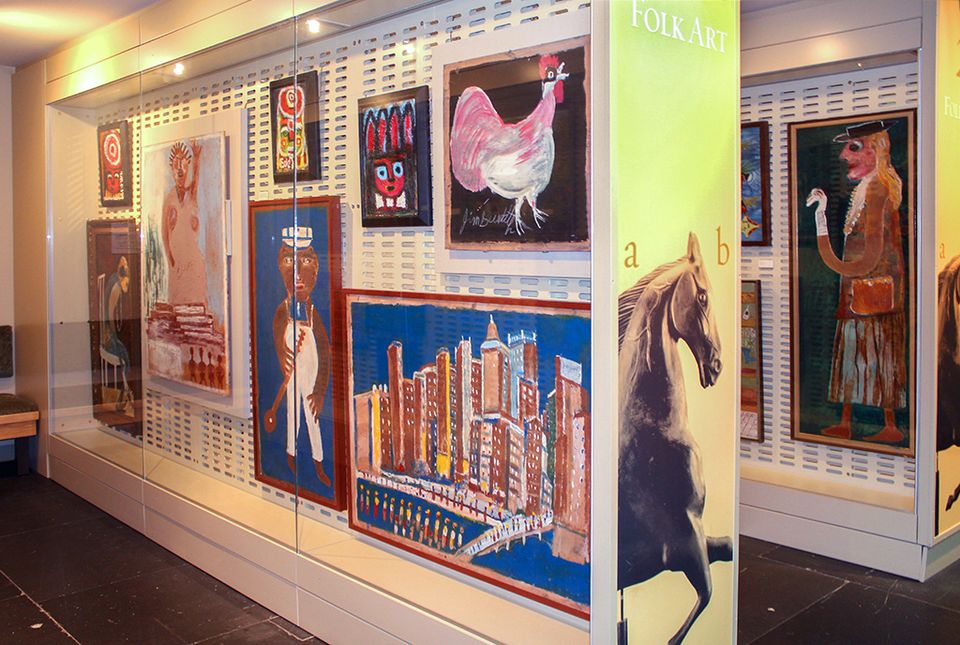
SAAM's open storage Luce Foundation Center is by no means a static place. With a calendar full of public programs and one of the most Instagrammable spaces in the city (we may be biased), you can see how the space is constantly changing in our folk and self-taught art cases. We just installed almost 50 newly-acquired and new-to-Luce pieces. This new installation features old friends like Howard Finster and Grandma Moses, but also artists and artworks which have never been represented in the Luce Center before.
Three of the newly installed artworks are by Eddy Mumma, who began to paint when he was 61 and in declining health. He attended a single class, during which he was criticized by the instructor for being "sloppy in his technique," so he walked out and never returned. He was hooked, however, and spent the last seventeen years of his life at home, painting with abandon. Mumma, or "Mr. Eddy," as he was often called, painted mainly portraits of figures with prominent eyes and large hands. SAAM curator Leslie Umberger sees Mumma's work as an extension of his identity as he got older; "As Mumma's physical presence faded, his art came increasingly alive. As a once-guiding religious faith flagged, his sense of self flourished."
The Saw and the Scroll is also new to the Luce Center, but might be familiar to any of you who have previously visited our folk and self-taught galleries on the museum's first floor. Jesse Howard was quite opinionated about politics, religion, and the lives of his neighbors in Fulton, Missouri. He proclaimed his views on hand-painted signs he displayed all over his his property. Here, he painted on an old saw and canvas (possibly an old window shade) and emphasized certain words with red. Howard's signs were an exercise of his First Amendment rights, and he urges us to, "READ ON, AND ON, AND KEEP ON READING."
The last piece I want to highlight is David Butler's Untitled (Angel). Butler filled his yard in Patterson, Louisiana with sculptures he made from cut, bent, and painted tin. His subjects were frequently inspired by the Bible, folktales, or mythology. And they often moved in the wind, or were placed so that the sun cast shadows through their cut-out forms. His fabricated garden always felt vibrant and alive.
The three artists I've featured in this post represent only a selection of the new artworks now on display in the Luce Center. While you're here, please pop by the information desk and let us know what you think of our new additions.
















